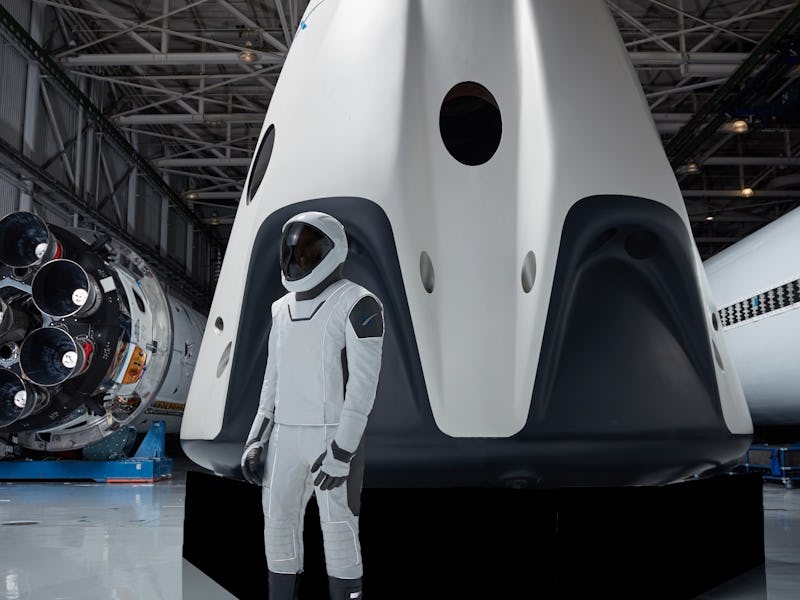SpaceX Crew Dragon: incredible video details the advanced astronaut suit
SpaceX's new video shows how the company is advancing spacesuit technology, with a focus on the future of space travel.

The Crew Dragon, SpaceX's human-carrying capsule, is also designed to carry a new kind of spacesuit.
On Monday, the company released a video via its YouTube channel that details the design of the spacesuit. The suit is currently being used by NASA astronauts Bob Behnken and Doug Hurley, who became the first two astronauts to fly into space in a SpaceX capsule when the "Demo-2" mission took off on May 30, 2020. The pair are expected to return to Earth soon, with a tentative return date of August 2, before four more astronauts will take off in the "Crew-1" mission in late September.
The video was previously shown during the livestream coverage for the "Demo-2" launch, but this is the first time that SpaceX has shared it by itself on its channel.
The suit, and the capsule as a whole, are part of NASA's plans to develop new ways of sending humans into space. The Commercial Crew program was started to help plug the gap left by the end of the space shuttle program in 2011. Since the end of the program, NASA had been renting seats on Soyuz rockets, operated by Russian agency Roscosmos and taking off from the Baikonur Cosmodrome in Kazakhstan. The success of SpaceX's capsule helps bring those launches a little closer to home.
These first six astronauts, and others still to come, are using a suit designed for comfort and safety. Chris Trigg, SpaceX's space suits and crew equipment manager, explained in the video that the suit was designed to be "something that the crew just has to literally plug in when they sit down, and then the suit just kind of takes care of itself from there."
The video highlights several impressive features of the spacesuit:
- It's an entirely in-house design, custom-designed for each crew member to ensure it fits perfectly.
- It's designed mainly to protect the crew members in case of depressurization.
- The suit also offers cooling, communications, hearing protection, and flame resistance with the outer layer.
- When the suit is plugged into the seat it provides air for cooling, gas, and avionics for communications.
- The helmet houses microphones and valves to regulate pressure.
- The gloves can interact with the capsule's touchscreens.
The suit was first unveiled via CEO Elon Musk's Instagram account in August 2017. Musk noted at the time that the suit was "already tested to double vacuum pressure." When Musk was later told on Twitter that the suit bore resemblance to those used in the Halo or Mass Effect video games, Musk responded that he'd played those titled before.
SpaceX's spacesuit.
The design will also help to play a role in supporting future missions, like the under-development Starship that's designed to send the first humans to Mars. Benji Reed, director of crew mission management at SpaceX, told Inverse in May 2020 that "we'll be taking what we learned from these suits and getting the data from it and applying that for future missions."
The Inverse analysis – SpaceX's suit has a futuristic design to it, one that makes it stand out compared to the sixties-era designs from the first space race. It maintains some of the design cues from earlier designs that allowed humans to visit the moon, like the wide visor and white fabric, but with updated design flairs like the black accent around the collarbone.
The iconic image from NASA's moon landing.
The helmet also bears resemblance to the Extra-Vehicular Activity helmet that first debuted in the 2007 game Halo 3. This wide-angled helmet featured a larger visor than the main character's design. In 2010's Halo: Reach, Emile wore a variation with a skull carved into the visor. Perhaps it's little surprise, then, that the suit's initial debut led to Halo comparisons.
As SpaceX prepares to send humans to the moon and Mars, the suit's development over time could become one of the most visually iconic components of its efforts.